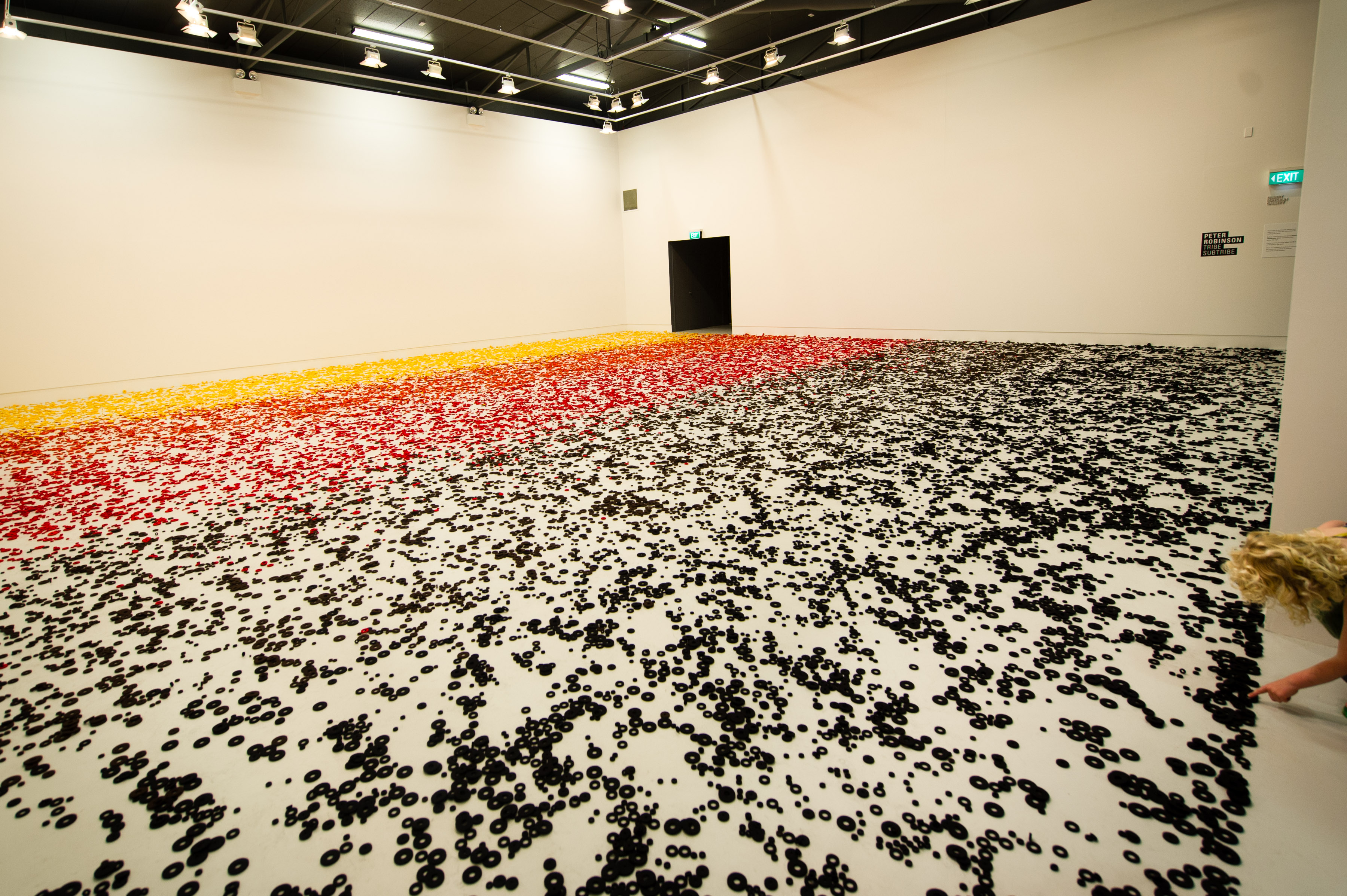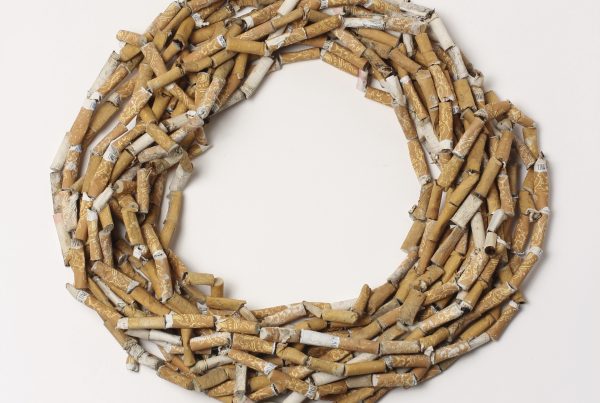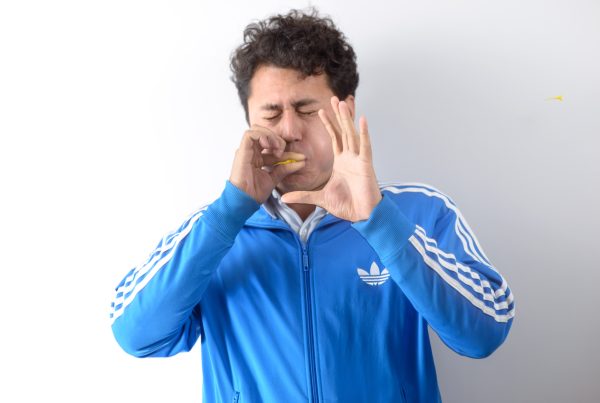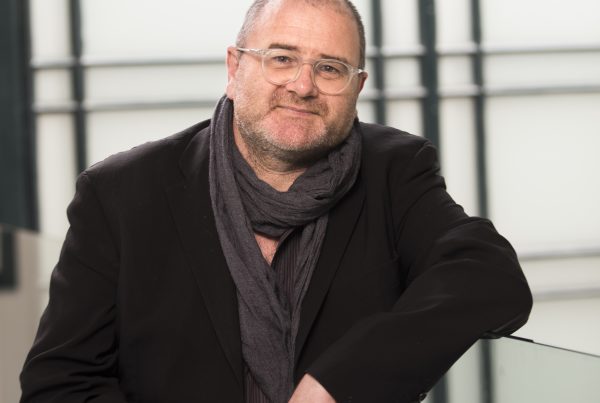
The exhibition is in the Dowse’s large north gallery. I had to pass through a very charming exhibition of banners to get to it. Momentarily distracted by the banners – commissioned to celebrate the tenth anniversary of the Dowse in 1981 – I was unprepared for a room full of small felt circles.
Well, I’m exaggerating. The floor was covered in felt circles. These had been organised into strict bands of colour – red, orange, yellow, black and brown – but by the time I got there, the felt circles were becoming mixed up and the floor looked like an Aboriginal dot painting. At the entrance to the gallery, signs ask you to remove your shoes and a swathe of instructions tell you what to do.
To participate, you are asked to thread felted circles onto spun aluminium poles of different lengths. The walls of the gallery were already lined with a good number of works created by members of the public, so I didn’t hold back. I got going and threaded a pattern of brown and orange circles onto my pole – it was my homage to the 1970s.
And that’s the thing with this installation: it’s full of homage. That felt circles and sticks threaded with felt circles could provide so many art references is astonishing. Partly it’s the restrained palette. For me it evokes the Aboriginal land rights flag, as I’m sure it’s intended to do, and the completed poles leaning around the walls remind me of Arnold Wilson’s Pou Whenua works from the 1980s – large-scale wooden posts whose shapes and colours are echoed in this installation.
Then there’s the felt, with its Joseph Beuys references. Felt was one of Beuys’ favourite media, as was the idea that anyone can be an artist. Is Robinson suggesting that for the purposes of this installation anyone can be a Māori artist?
But the surprise of the project is the relational aesthetics aspect. According to Wikipedia, relational aesthetics means that the artwork creates a social environment in which people come together to participate in a shared activity. Robinson has never struck me as that sort of an artist, but there you go. While I was there some friends arrived, and we hung out making our sticks. I’ll be cheesy and suggest this is Robinson’s way of showing that art can bring us together – and hence the title.
When I visited the exhibition it was in its first phase: the making. As I write, it is in its second phase, where all the completed sticks are leaning around the walls of the gallery. By the time you read this, the exhibition will be in its third phase and all the sticks will be lying on the floor. I want to see that – I think that’s the moment when the work will create its own references. Tribe Subtribe is on until 30 March.
[info]March Art Recommendations
The Hutt Valley is the place to be in March. Shapeshifter returns as part of the New Zealand International Arts Festival visual arts programme (until 16 March). Curated by Dowse director Courtney Johnston, it includes 3D works by 64 artists from around the country, installed in the Hutt City Civic Gardens. Artists include Tim Wraight, Lucy Bucknall, Mia Hamilton, Rick Rudd and Guy Ngan.
At the Dowse itself, Francis Upritchard, Suji Park, Kate Newby, Paul Maseyk, Madeline Child, Isobel Thom and Kate Fitzharris feature in Slip Cast, an exhibition that considers a revived interest in ceramics by contemporary artists. Slip Cast runs until 2 June.
[/info]



